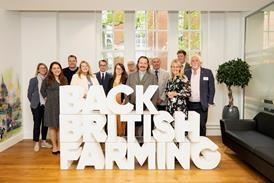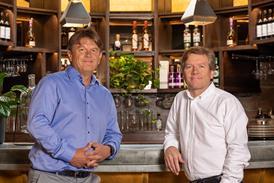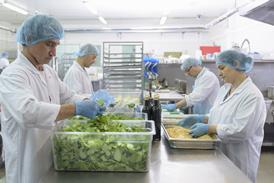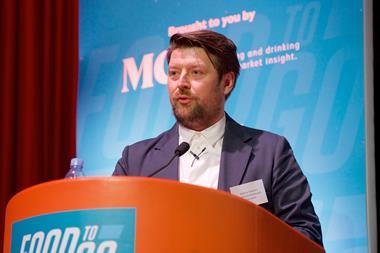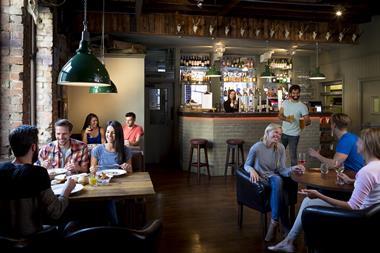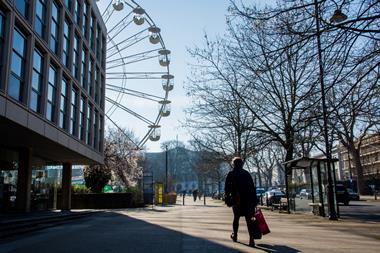Restaurants in California kicked off the movement, but now a consultancy service for menus is looking to bring the UK on board. MCA’s sister title Food Spark investigates.
Reducing the environmental impact of the food industry is taking a new turn, thanks to a trend that’s making its way over from the US.
Offsetting one’s carbon ‘foodprint’ or ‘forkprint’ started in California (of course), where restaurants can join a programme that adds an optional 1% surcharge to diners’ bills, the money going towards a public fund to help farmers reduce carbon in their food production practices.
More than 25 restaurants have signed up to the scheme, dubbed Restore California Renewable Restaurants, which pays farmers $10 per tonne of carbon removed from the atmosphere. This is used to boost healthy soil, with the added benefit of delivering healthier and tastier food, according to the organisation behind the idea, Perennial Farming Initiative.
Now, a similar concept appears to be working its way into the UK via a carbon consultancy firm called E.Mission. It wants restaurants to use its carbon menu analysis and labelling service to help diners make informed decisions. Meals that have a reduced carbon impact are highlighted with a small symbol of the world on the menu.
A recent trial in a restaurant, which added the carbon emissions of a dish on the menu, saw results in just two weeks – emissions from main meals chosen by consumers fell by 28%.
Young people driving change
So how does E.Mission’s carbon analysis work on dishes?
“We consider the emissions associated with the production, transportation and cooking processes of each ingredient on a menu. The emissions are calculated for each dish and presented on the menu,” James Bagshaw, director of partnerships at E.Mission, tells Food Spark.
“The customer is given the chance to opt for a low-carbon dish, and for the first time can compare the environmental impact between dishes. More specifically, the following factors are considered: manure management, energy throughout the process, land use changes, fertiliser, enteric emissions (from animals), transport, refrigeration, crop processing, packaging and cooking.”
On average, diet contributes to 24% of an individual’s carbon footprint and is comparable to the emissions from driving a car to work or school or heating a home, explains Baghsaw. However, there is a large gap of public awareness surrounding the foods that are better or worse for the environment, he adds.
“There is plenty of evidence to show that, as climate change is becoming a more important consumer issue, customers are beginning to demand this information, especially young people,” he comments.
“Consumers care more than ever about the impact of their diet on the environment – the substantial rise of those opting for flexitarian, vegetarian and vegan diets is proof enough. Recent movements against climate change (e.g., Extinction Rebellion and school strikes) demonstrate the growing demand from younger generations for action. Considering the average person aged 15-30, most don’t own a property and already opt for the most convenient mode of transport. Diet is therefore the element of someone’s lifestyle they are often most able to influence.”
In fact, a small-scale survey of 500 people commissioned by E.Mission found that three in four adults would prefer to eat in a restaurant that offers information on the carbon impact of meals on the menu, while 78% of diners were keen to reduce their environmental impact when eating out.
It also found that 90% of respondents felt large restaurant chains and caterers have a responsibility to do all they can to help the environment.
Could emission information become as common as recycling?
Trailblazing on this issue makes good business sense, according to Bagshaw.
“Being an early adopter will give the restaurant a highly desirable unique selling point for customers without having to reduce consumer choice,” he says. “Low carbon food can tend to be cheaper as well so it’s possible to operate at a higher margin on environmentally friendly food.”
He claims menus that change regularly are also a good way for restaurants to rack up carbon credits: “Buying seasonal produce can often be a very quick win towards a low carbon menu, so in fact we’d recommend it.”
Apart from obvious measures like slimming down red meat options (particularly beef and lamb) and food waste, Bagshaw advises restaurants to avoid the use of highly perishable vegetables, like asparagus, when they are out of season.
“These have to be airfreighted out of season, increasing their impact by as much as 28 times,” he says. “Saving these vegetables for specials can offer higher returns and using locally grown or shipped vegetables gives better flexibility on other menu items.”
Bagshaw believes climate-friendly meals are going to be a big feature in the hospitality industry in the future.
“The UK is a food nation, so it’s a natural step that customers will start to demand this information in the same way that it’s now common practice to recycle or opt for a green energy provider.”
The full version of this article was originally published on foodspark.com, a digital subscription service designed to inspire and inform innovation across the food industry.
For anyone needing to stay ahead of the culinary curve, Food Spark will offer immediate access to the emerging trends, ingredients, personalities and headwinds defining the future of food. Explore more content by visiting Food Spark or by requesting a demo: joinus@foodspark.comor 01293 610371.
Precis






